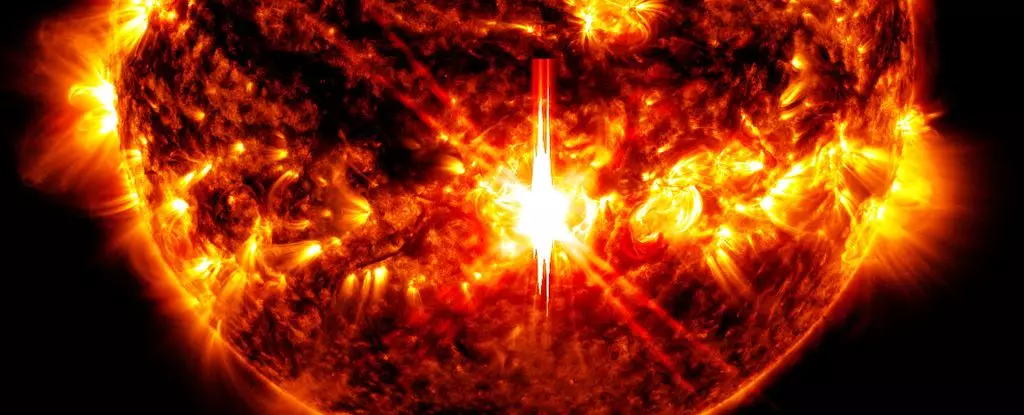The recent surge in solar activity has left astronomers and enthusiasts alike buzzing with excitement. On October 3, 2024, the Sun unleashed an extraordinary X-class solar flare, measuring X9.0. This flare marks the most potent outburst witnessed since September 2017 and stands as the second X-class flare to emerge from the same sunspot region within the month. This article delves into the significance of solar flares, their impact on Earth’s technology, and the astronomical phenomena we can expect in the wake of these eruptions.
Solar flares are intense bursts of radiation resulting from the Sun’s magnetic field lines becoming tangled and snapped. These phenomena often occur in areas known as sunspots, where the magnetic fields are especially potent and complex. The recent X9.0 flare originated from sunspot region AR 3842, which possesses a magnetic configuration classified as ‘Beta-Gamma-Delta.’
This classification indicates a space inhabited by aligned opposing magnetic fields that are tightly packed, creating an environment ripe for explosive solar activity. Solar flares are typically categorized into several grades, with X-class flares being the most volatile, capable of disrupting communications and generating spectacular auroras. With the Sun currently in its solar maximum phase, we can expect to witness an uptick in such explosive events, which began in earnest in early 2022.
While the inhabitants of Earth remain shielded from the most harmful aspects of solar flares—specifically X- and gamma radiation that fail to penetrate our atmosphere—these heavenly events still trigger a cascade of consequences. High-frequency radio communications often suffer temporary disruptions following a significant flare, and the associated coronal mass ejections (CMEs) can further complicate matters.
CMEs consist of billions of tons of solar particles and tangled magnetic fields that are ejected into the solar system. Their arrival at Earth can take anywhere from a couple of days to a week. When these particles collide with Earth’s magnetosphere, the results can manifest as geomagnetic storms.
The potential impact of these storms includes fluctuations in power grids, which may necessitate voltage corrections, increased drag affecting satellites, and disruptions to both satellite communications and GPS services. Although such an X-class flare and its accompanying CME might not severely disrupt everyday life, they can lead to awe-inspiring displays of auroras, observable as low as 50 degrees latitude.
Auroras are perhaps the most mesmerizing side effect of solar flares and CMEs. When solar particles collide with Earth’s magnetic field, they funnel toward the poles, energizing atmospheric particles. This process results in ionization, creating brilliant colors that range from green to pink, purple, and red, depending on the substances present in the atmosphere.
As we witnessed with the recent X7.1 flare and its CME earlier in October, the subsequent X9.0 outburst will likely enhance auroral displays, with forecasts indicating excellent conditions for viewing over several days.
However, the possibility of witnessing cannibal CMEs, which occur when two solar ejections merge and amplify the solar particle streaming, increases the potential for more intense geomagnetic storms. Although the recent eruptions were not closely timed enough to create such an event, the excitement surrounding solar activity is palpable.
The recent surge in solar activity prompts a vital inquiry into the relationship between solar flares and technology on Earth. As society becomes increasingly dependent on satellites and digital communication systems, understanding and predicting solar activity has become critical. Governments and organizations must continuously enhance their monitoring systems to mitigate the effects of solar storms on technological infrastructure.
As we enter a new era of increased solar activity, it is essential to prepare for the variety of possibilities that a dynamic Sun presents. While many may view solar flares primarily as a celestial spectacle, the implications extend far beyond atmospheric beauty into tangible effects on technology and power systems.
The recent X-class flare is not just an astronomical event but a complex interplay of solar dynamics that profoundly affects life on Earth. For those with their eyes turned skyward, the imminent auroras offer a chance to witness one of nature’s most breathtaking displays. This is a reminder of the Sun’s power and our planet’s fragile relationship with it—a cosmic dance that we must learn to appreciate, understand, and respect.


Leave a Reply